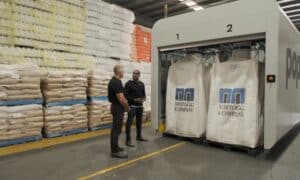How many residential rooftop solar panel systems can $122 million buy? A lot. How much does the same amount buy in terms of progress in carbon capture and sequestration (CCS)? Very little it seems.
The Global Carbon Capture and Storage Institute was launched in 2009, courtesy of $100 million a year seed funding provided by Australian taxpayers. The Institute is charged with the task of accelerating the adoption of carbon capture and storage.
CCS is described by some as essentially a high tech way to sweep dirt under a rug. Aside from long term safety concerns surrounding injecting carbon dioxide underground, “clean coal” and carbon capture technologies are also often energy intensive; meaning more coal needs to be ripped out of the ground and burned to generate the energy to operate them.
However, with $122 million already reportedly spent by the Institute, you would be forgiven for believing a substantial progress has occurred in refining CCS technologies and bringing them to market. Unfortunately, it doesn’t appear to be the case.
The discontent concerning the Global Carbon Capture and Storage Institute isn’t confined to outside observers.
According to The Age, a survey of the institute’s 190 members found 31% believed it was “fast losing its relevance and must start to demonstrate greater value to members immediately”. Perhaps Australian taxpayers might echo that sentiment considering they are the group actually ponying up the cash.
In defending the Institute, its new chief executive was quoted by The Age as saying “It’s actually impossible to spend that amount of money responsibly.”
Perhaps Mr. Page was misquoted, but The Age also says $54.25 million has been spent on ”operational expenses” in the first two years, including “numerous first-class air fares for board members and lavish overseas trips for more than 15 of the institute’s Australia-based staff.”
To answer the original question of how much rooftop solar electricity generation potential $122 million buys – the answer is over 40 million watts capacity fully installed, using existing technology at today’s prices – including GST and before any other subsidisation.
40 million watts of solar panel capacity can avoid electricity generation related emissions of approximately and conservatively 85,668,000 kilograms annually, and for many years.
Over the estimated serviceable lifetime of the equivalent value in solar panels, at least 1.7 million tonnes of carbon emissions would be avoided; possibly far more given some solar panels are still generating significant electricity decades after their installation. This is in addition to the many benefits of distributed electricity generation, substantially boosting green collar jobs, further pushing down the cost of wholesale electricity through the Merit Order Effect and helping decrease the cost of solar power equipment even more.
It’s all increasingly pointing to an ounce of carbon prevention in the form of solar being worth pounds of carbon sequestration “cure”. It also raises the question – should the $113 million reportedly remaining in the Institute’s coffers be rerouted elsewhere?














































